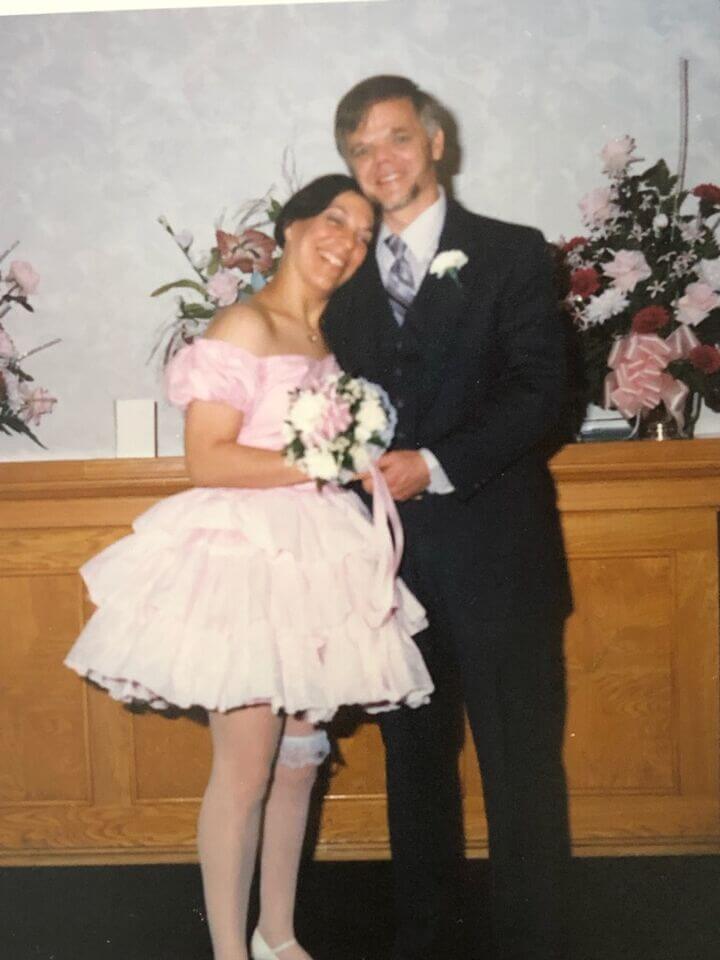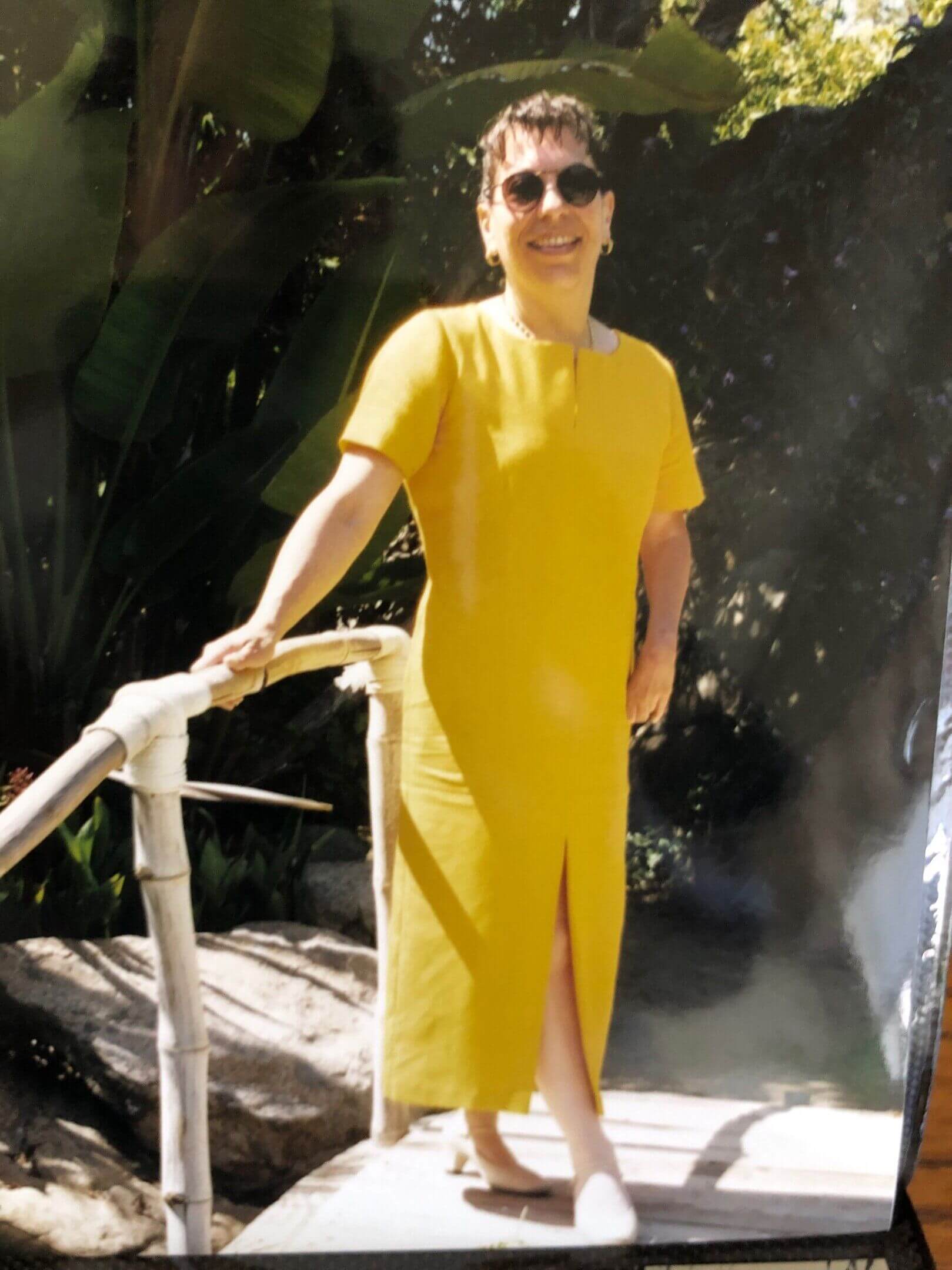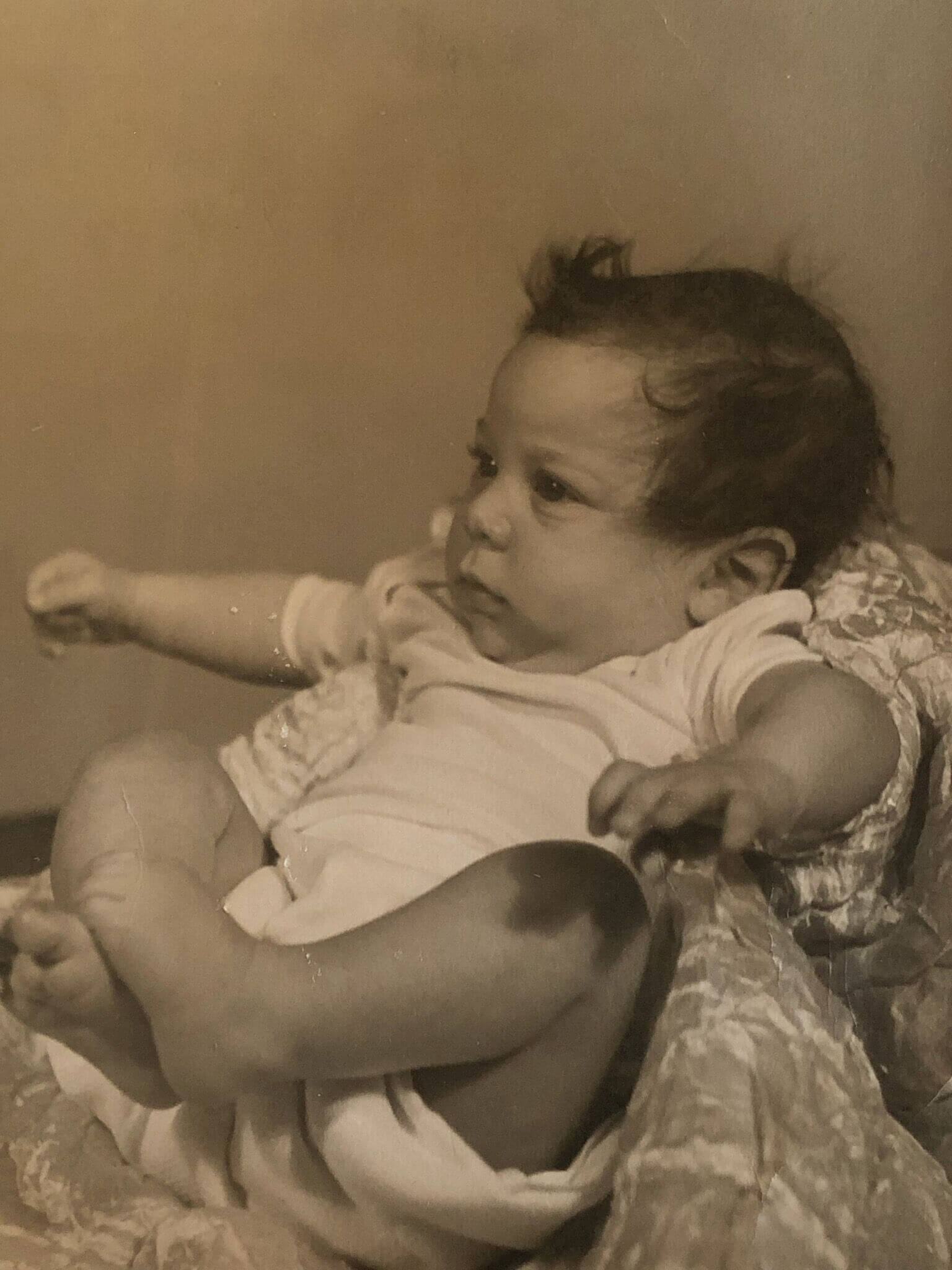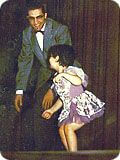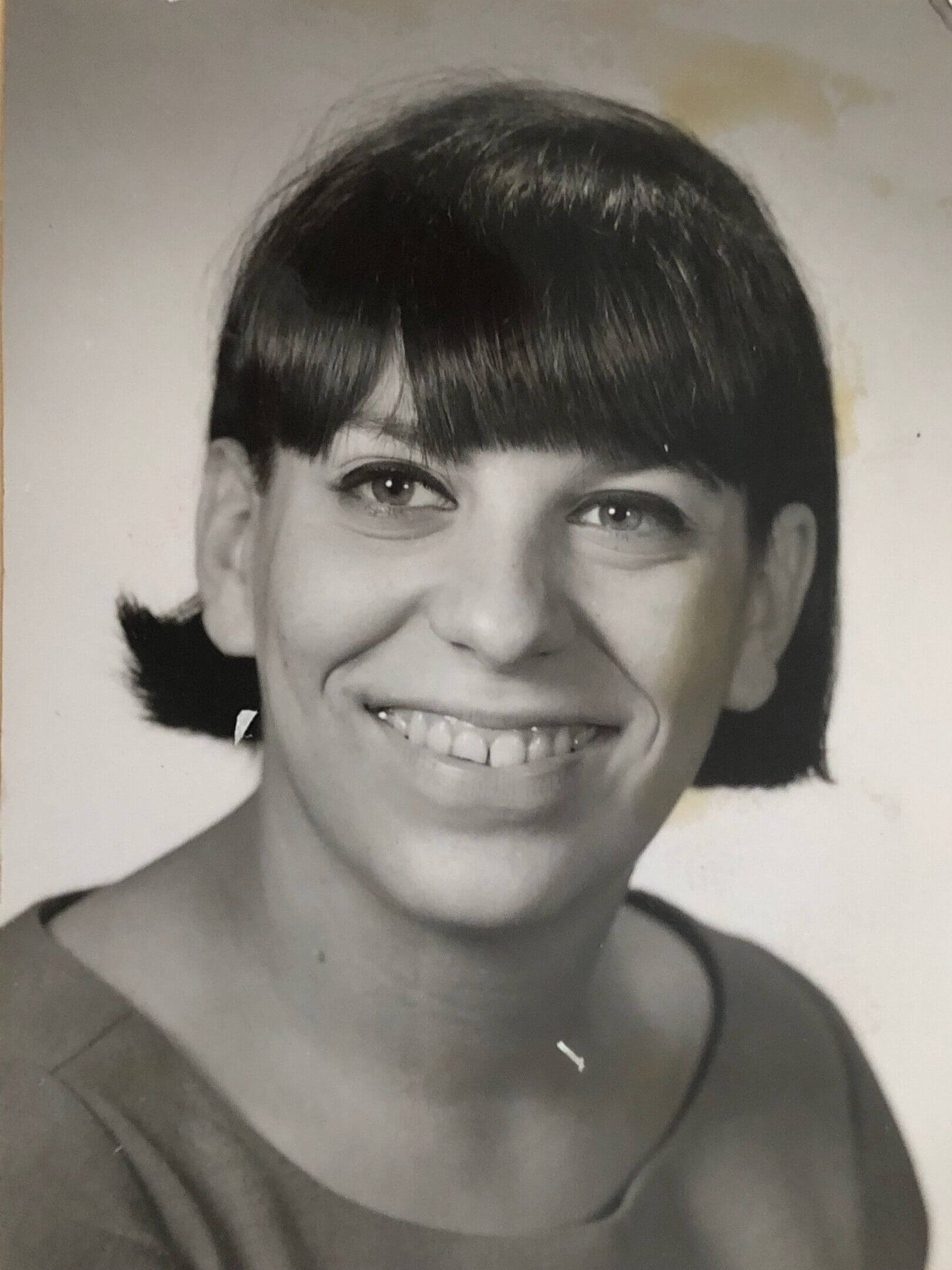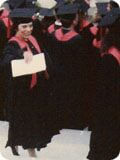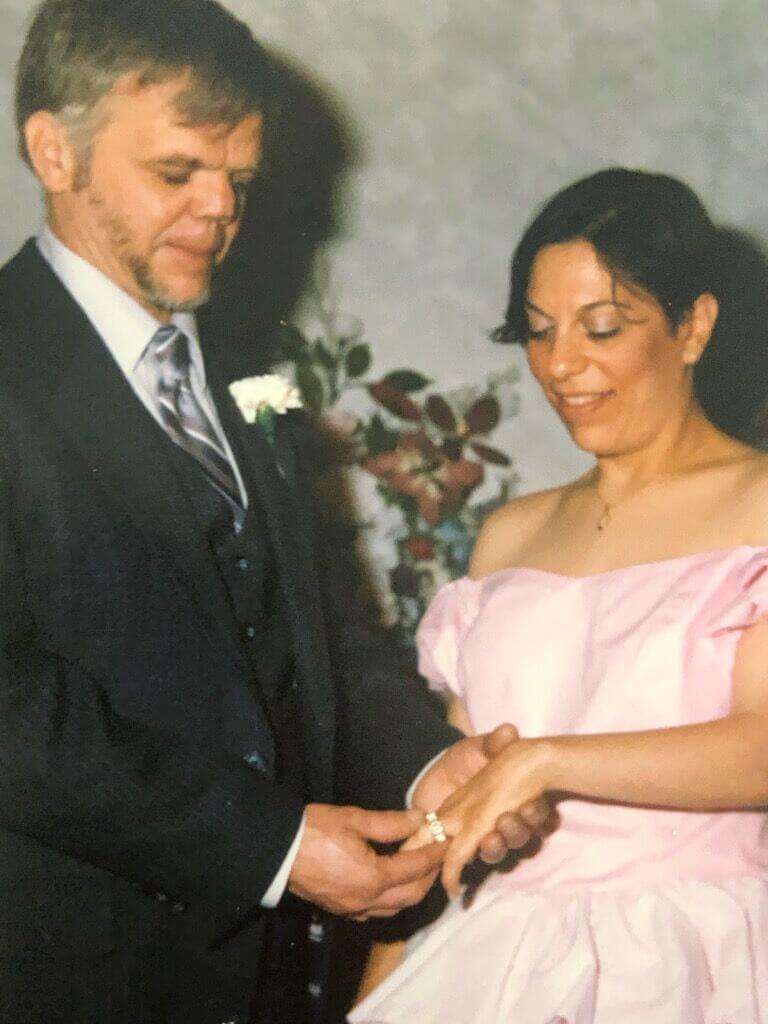Hi, I’m Karen. I’m an author, a speaker, a disability support specialist, and a special needs advocate. I am also paralyzed on one side and have a learning disability.
As a disability support coach and special needs advocate, I’m here to say, “If I can do it, you can do it, too!”
I know first-hand the struggles of living with a disability. I was born in perfect health, but when I was a baby a rare adverse reaction to a DPT shot put me into a coma. At 18 months, I was diagnosed with left side hemiplegia, a kind of cerebral palsy that causes paralysis on one side of the body. With that diagnosis came physical challenges, a learning disability—and worst of all—people saying, “You can’t.”
But I refused to settle. I wanted to live fully and be treated with dignity and respect. No pity for me!
“You tell me I can’t, and I’ll show you I can.”
When I was three-and-a-half, my mother started me on dance lessons. While my doctor and other experts saw a permanently crippled toddler with a leg brace, my teacher the great Al Gilbert saw a little girl who wanted to dance. He taught me how to hop, skip, jump and run—and most importantly—to DANCE! By age eleven, I was doing all this without the brace, and through it all, on special occasions my mother let me wear pretty dress shoes so I felt like I was beautiful through and through.
That is the power of hope and hard work. That is the power of I can.
By believing in me and giving his time and dedication to help me reach my potential, Al transformed my life. Al inspired me to help others unconditionally, just as he helped me. Having somebody believe in you—and work to help figure things out when they seem hard—matters. My Mama was the same way. She never treated me differently from how she treated my sister. Like Al, she treated me like a normal, healthy child.
Just as importantly, I learned to believe in myself, and this remains one of the biggest lessons I teach people. Believe in yourself! If I can do it, you can do it, too! People can achieve their goals, if they believe they can, and if they get the help they need. We all need help, but ultimately, we are the ones who must achieve our own goals. Nobody can do it for us. You can choose to merely survive, or you can pursue your dreams and thrive.
Here I am at age twenty in my dance leotard. I had graduated high school and was working as a sales girl, but I never stopped dancing. My left limbs are still visibly weaker and smaller than my right (and they always will be) but my spirit is good—and I can dance! I am thriving!
Public School and The Experts
In my forthcoming book, The Healing Horse, I write a lot about my experiences during twelve years of public education. For now, I will just say that in spite of being passed from one grade to the next, and in spite of being my high school class Valedictorian, I could barely write a straight sentence when I graduated. However, I went on to college and received a prize for my creative writing, along with an AA degree in English with honors, which showed how wrong the so-called experts were about me.
You Can Break Through Every Barrier
From Sheltered Workshop to Real Work at Ohrbach’s
After graduating high school, I went to the California State Department of Rehabilitation for help finding a job. Because of my learning disability I did not test well, so they decided I was borderline mentally retarded and could not hold a real job. They put me into a sheltered workshop. As always, I gave it my all, but I didn’t need to spend a lot of time folding boxes with my one strong hand to know that I was capable of much more.
CETA and a Career in Activities
Training, Certification and Service on an Executive Board
College and Winning a Civil Rights Suit for Students with Disabilities
However, after working in the recreation and dance field for many years, and having many successes, I wanted to go back to school and get my college degree. Unfortunately, I had to go though the same discrimination, testing and labeling all over again, at the hands of the California Department of Rehabilitation (DOR). The difference this time, though, was that I was stronger, both emotionally and intellectually, than I was right out of high school. I was prepared to stand up and fight. I was not going to succumb to the status quo. I was not going to wait, patiently. I was going to resist all pressure. I was going to stand tall and do battle.
Santa Monica College and an Associate of Arts Degree with Honors in English
Writing
Letter to my first boyfriend
My writing began when I was 18 years old, just out of high school, and working at Ohrbach’s after rejecting the box-folding job to which California DOR had condemned me. My first boyfriend was traveling in Europe before beginning the pre-med program at Stanford, and he wrote me beautiful love letters. I found that I could not write well enough to compose letters back to him. I was devastated—I was the high school valedictorian who could not write well enough to respond to a love letter.
After all those years of struggling with academics in school, I relived the haunting feelings and asked myself, “Why can’t I learn? I try so hard. I give my all in everything I do!”
My mother tried to help me respond to my boyfriend’s letters, but I knew that my mother would not be around to help me, forever. Since my grade school years, she had driven this thought into me. She was mortal. She was not a goddess. Her life would end, and then I would be on my own in this world. Even though the schools had promoted me and made me Valedictorian, I had to learn to read and write. Otherwise I couldn’t function or take care of myself in this world. I knew within, that if I didn’t do something about this, I would certainly spend the rest of my life in front of the TV set, locked away in an institution, beginning the moment my beloved mother passed away.
The intensity and emotional pain were unbearable. I knew I had to accept myself and nurture myself and be kind to myself. Blaming myself would not help anyone. I knew I had to do something to help myself. I knew—somehow, some way—I had to learn to read and write. I had to learn how to construct grammatically correct sentences. I was embarrassed over the fact that I wrote run-on sentences and that they didn’t make any sense at all, when I re-read them. Nor could I comprehend what I was reading. I cried myself to sleep many nights praying to God for guidance and asking him “Why did you make me this way? What was your purpose for me?” I kept searching and asking, and I never gave up!
Meeting Robert and learning to write
After I won my civil rights lawsuit and was enrolled in Santa Monica Community College, I attended English classes. One day, right in front of my English professor’s door, like an angel from above, my prayer was answered.
My professor said to Robert, who was another student and would become my tutor, “This is Karen. She has wonderful ideas and a poetic soul, but she needs help with the mechanics of writing and learning.”
The night before, I had said an affirmation, and now my prayer had been answered. From that point on I ate, slept and drank all the knowledge and material put before me. I was more determined than ever to learn all the things I never learned before. I was like a sponge that soaked it up. Robert worked with me for hours, every day, and also started me on creative writing to express myself.
Conclusion
Closing thoughts
Things have changed since 1979 when I won that case, but not enough. We need to continue to work to make sure people with disabilities are accepted and able to play and live and work. We all need to be accepted and treated equally in a society that welcomes our uniqueness. And all changes start first with our thinking.
That’s why I work so hard to change the ideas that people have about disabilities. Instead of thinking about what they can’t do, we need to think about ways to let them do all they can do. Outside the disabled community, I work to show people that obstacles still exist, and they must be dealt with. I train teachers, counselors and families how to help people with disabilities focus on their abilities.
Instead of pushing people into a disabled box or a CP box or a retarded box, we need to see people for who they really are, and we need to help them get out of their own boxes of self-limiting beliefs. We need to embrace our differences and welcome our uniqueness. Each of us has something special to give to the world. Sometimes it’s as simple as stepping back and letting somebody make a decision for themselves. Sometimes it’s teaching them how to write or finding the tools that let them communicate. It does not have to be hard.
Each of us needs an opportunity for a meaningful life. We need to embrace and hold close to our communities. We need to adopt new philosophies of acceptance and support for people with disabilities, with an honesty, a truth, an enthusiasm, and a willingness that shows we really do care, and then we can change the landscapes of their lives.
We need to change, redesign, refine and advance our thinking about better education, healthcare, playgrounds, and job opportunities. In some places, we need to better our laws to ensure our rights are protected. There are still many stigmas and assumptions to overcome.
But with all that, I come back and offer hope—a hope that comes through teaching and educating others how to shift their mindsets and attitudes, so they can make positive changes for themselves or the loved ones they care for.
I never gave up on myself or my dreams. I did not listen to the thousands of people who told me, “You’ll never amount to anything” or wondered “How can she teach dance with only one arm and one leg?” or “How can you learn if you have a learning disability?”
With one arm and one leg, I’ve taught dance and adaptive fitness programs. With that learning disability, I went to college and wrote a book. With fierce determination, I became a disability support coach, a keynote speaker, and an activist.
I have never given up on being a voice for dreaming and achieving in the face of adversity—and I never will. The greatest gift I have received from clients and audiences alike is when I hear them say, “If Karen can do it, I can do it, too!”
Happily Ever After
To end on a very happy and personal note, I have been focusing on my professional life, but I do not want to leave out my private life. As I pursued my career and the causes I believe in, I also maintained a wonderful relationship with my family, and I made many friends. Along with teaching dance, I danced for fun, and this led to something great. On Valentine’s Day of 1989, I went on a square dancing date with the most wonderful man in the world. Exactly one year later, we got married, and as of this writing we have been happily married for over 38 years.
Keep telling yourself, “If Karen can do it, I can do it, too.” You can have the life you want, in every way.



